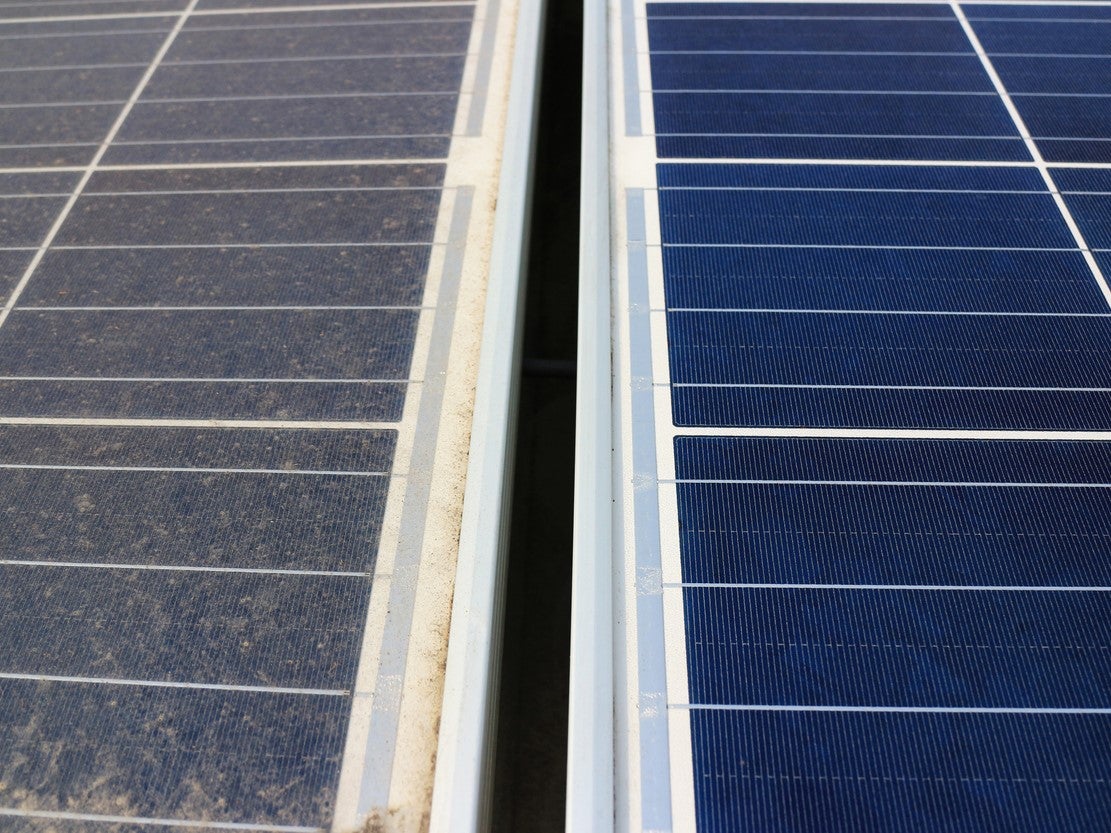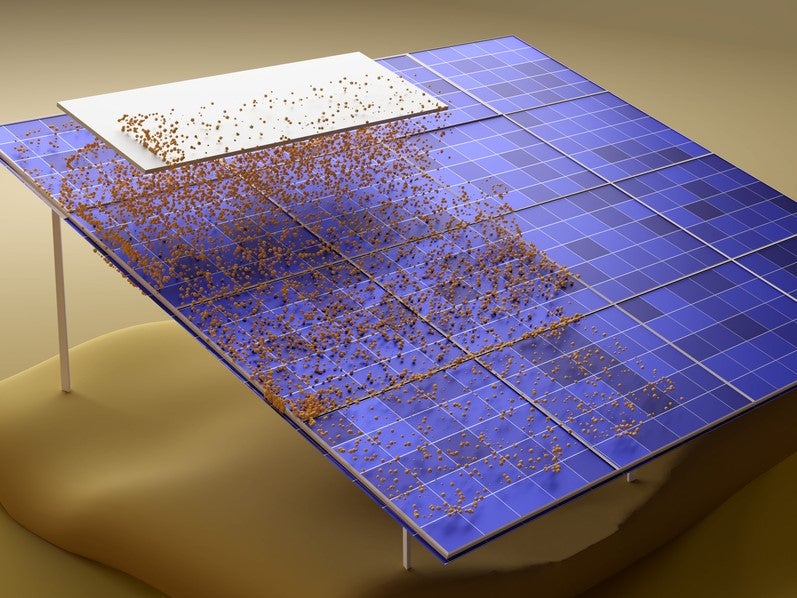Solar panels that repel dust could save 10 billion gallons of drinking water every year
Electrostatic charge has previously been used by Nasa to remove dirt from the solar panels on Mars rovers

Your support helps us to tell the story
From reproductive rights to climate change to Big Tech, The Independent is on the ground when the story is developing. Whether it's investigating the financials of Elon Musk's pro-Trump PAC or producing our latest documentary, 'The A Word', which shines a light on the American women fighting for reproductive rights, we know how important it is to parse out the facts from the messaging.
At such a critical moment in US history, we need reporters on the ground. Your donation allows us to keep sending journalists to speak to both sides of the story.
The Independent is trusted by Americans across the entire political spectrum. And unlike many other quality news outlets, we choose not to lock Americans out of our reporting and analysis with paywalls. We believe quality journalism should be available to everyone, paid for by those who can afford it.
Your support makes all the difference.Scientists have developed a new way to clean solar panels using electrostatic charge that could save billions of gallons of drinking water each year.
The self-cleaning system, created by researchers at the Massachusetts Institute of Technology (MIT), repels dust particles through a simple electrode that passes just above the panel’s surface.
The system is particularly suited to the vast solar installations in desert regions, which are prone to dust and sand storms that can reduce a panel’s ability to produce electricity by up to 30 per cent.
Current setups require an estimated 10 billion gallons of purified water each year to clean, which is enough to supply drinking water for up to 2 million people.
“The water footprint of the solar industry is mind boggling,” said Kripa Varanasi, a professor of mechanical engineering at MIT. “The industry has to be very careful and thoughtful about how to make this a sustainable solution.”
Recent estimates from the BP Statistical Review of World Energy 2021 calculated that 3.1 per cent of electricity generated globally comes from solar, though this figure is expected to reach 10 per cent by the year 2030.
Most new installations will follow existing trends by being located in desert areas, where sunlight is abundant but water is scarce.
Current waterless cleaning technologies are both labour intensive and damaging to the solar panels, while even a slight reduction in power output as a result of dirt can result in billions of dollars worth of lost power output.
“There is so much work going on in solar materials,” said Professor Varanasi. “A mundane problem like dust can actually put a serious dent in the whole thing.
“They’re pushing the boundaries, trying to gain a few per cent here and there in improving the efficiency, and here you have something that can obliterate all of that right away.”

Electrostatic charge has been used in the past by Nasa to remove dust and other small particles from the solar panels on Mars rovers, however it had previously been impossible to use this version of the technology on Earth due to the humidity.
The breakthrough came after the MIT researchers took into account the electric charge on dust particles, which come with a thin layer of absorbed water that can act as a conductor.
The researchers developed a lab-scale prototype that demonstrated up to 95 per cent recovery of lost power output using the electrostatic dust removal technique, which the researchers claim can be used in most geographical areas on Earth, even the driest deserts.
The study, titled ‘Electrostatic dust removal using adsorbed moisture-assisted charge induction for sustainable operation solar panels’, was published in the journal Science Advances.


Join our commenting forum
Join thought-provoking conversations, follow other Independent readers and see their replies
Comments